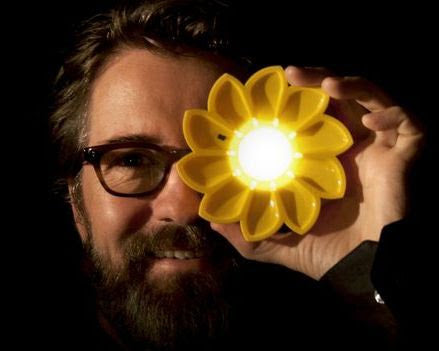DiVERGE Archives: Olafur Eliasson


The focus of this week's DiVERGE Archives is on Olafur Eliasson, a Danish-Icelandic artist that uses elemental materials - like water and light - to create unique art installations that interact with the viewers and are as groundbreaking as they are purposeful.
Olafur was born in 1967 in Copenhagen but spent a lot of his childhood in Iceland, where his parents were from. Iceland's wild landscapes had a powerful impact on the artist – its hot pools, lava fields, volcanoes, waterfalls, caves and moss banks - and his later work recreated some of the things that enchanted him as a boy. Despite having his first solo exhibition at only 15 years old, his first passion was actually breakdancing for which he even won the Scandinavian championship.

Beauty is one of Eliasson's earlier works and consists of a single spotlight illuminating a section of perforated tubing. When water is pumped through the tube, tiny water droplets cascade out, producing a curtain of mist, which then reflects the light to produce a rainbow. In using their bodies to control their perspective, viewers become responsible for their own dialogue with the work.
Eliasson soon began creating fully immersive installations on a grand scale. The Weather Project is his most celebrated large scale installation, where he transformed the Turbine Hall at London's Tate Modern into a giant fake sun of dazzling pseudo-radiance, using an assemblage of 200 mono-frequency bulbs arranged in a semi circle and reflected onto a mirrored ceiling. The ceiling was covered by a large mirror in which visitors could see themselves as tiny black shadows on a sea of orange light. By bringing the sun indoors, people were encouraged to reconsider their relationship with an object of extraordinary beauty, which had otherwise become nonchalantly familiar.

For DiVERGE, what makes Olafur Eliasson's works distinctive is how he raises awareness for critical issues that our world faces. His work often explores the relationship between humans and the natural world, and as his artistic practice has continued to veer toward the altruistic, he has become more concerned with mankind's impact on climate.
Ice Watch is one of his most famous works. Olafur harvested twelve large blocks of ice cast off from the Greenland ice sheet and presented them in prominent public places in Copenhagen, Paris and London. The installation raised awareness of climate change by delivering a direct and tangible experience of the reality of melting artic ice. Eliasson said the piece allowed for the ability to "reach people in a way that reports, graphs, and data cannot." He concluded, "I feel that this is an important step towards motivating people not just to know something but also to respond to it, to feel the urgency of it and to take action."

Eliasson also began seeing his art as a tool to counteract the consequences of a globalized society. He has stated: "art is not just an object, it is a sense of community." In his seminal project Little Sun, Eliasson worked with engineer Fredrick Otteson to develop a small, solar LED lamp shaped like a meskel flower - Ethiopia's symbol for positivity and beauty. The portable and affordable suns were devised to provide the 1.2 billion people worldwide living without electricity a clean and accessible light source as an alternative to the more often used toxic, fuel-based kerosene lanterns. In conceiving the Little Suns, Eliasson has turned art into a social business. When a Little Sun is sold within a country that has electricity, another one is automatically provided to an off-grid African community at a locally affordable price. His team encourages off-grid entrepreneurs to start their own small businesses selling Little Suns by providing them with starter kits and training. As a result, the suns create jobs and generate profits within local communities.

Olafur Eliasson has changed what it means to be an artist. His work blends architecture, ecology, education, sustainability, climate change, perception and collective activity. There is a sense of wonder that runs through his work which helps explain why it speaks to so many different people all around the world. Make sure to visit his homepage to discover more about this inspiring individual.












